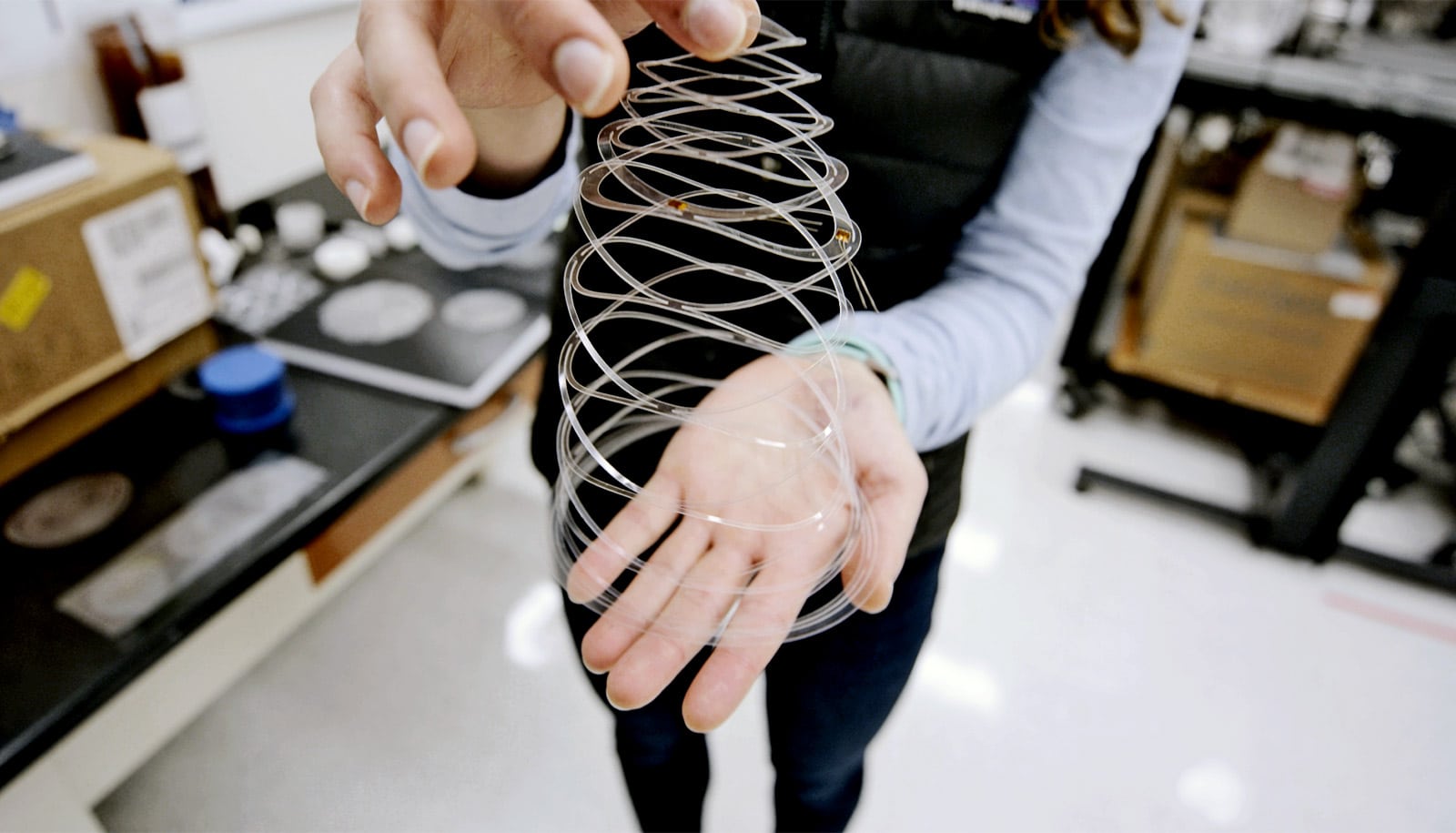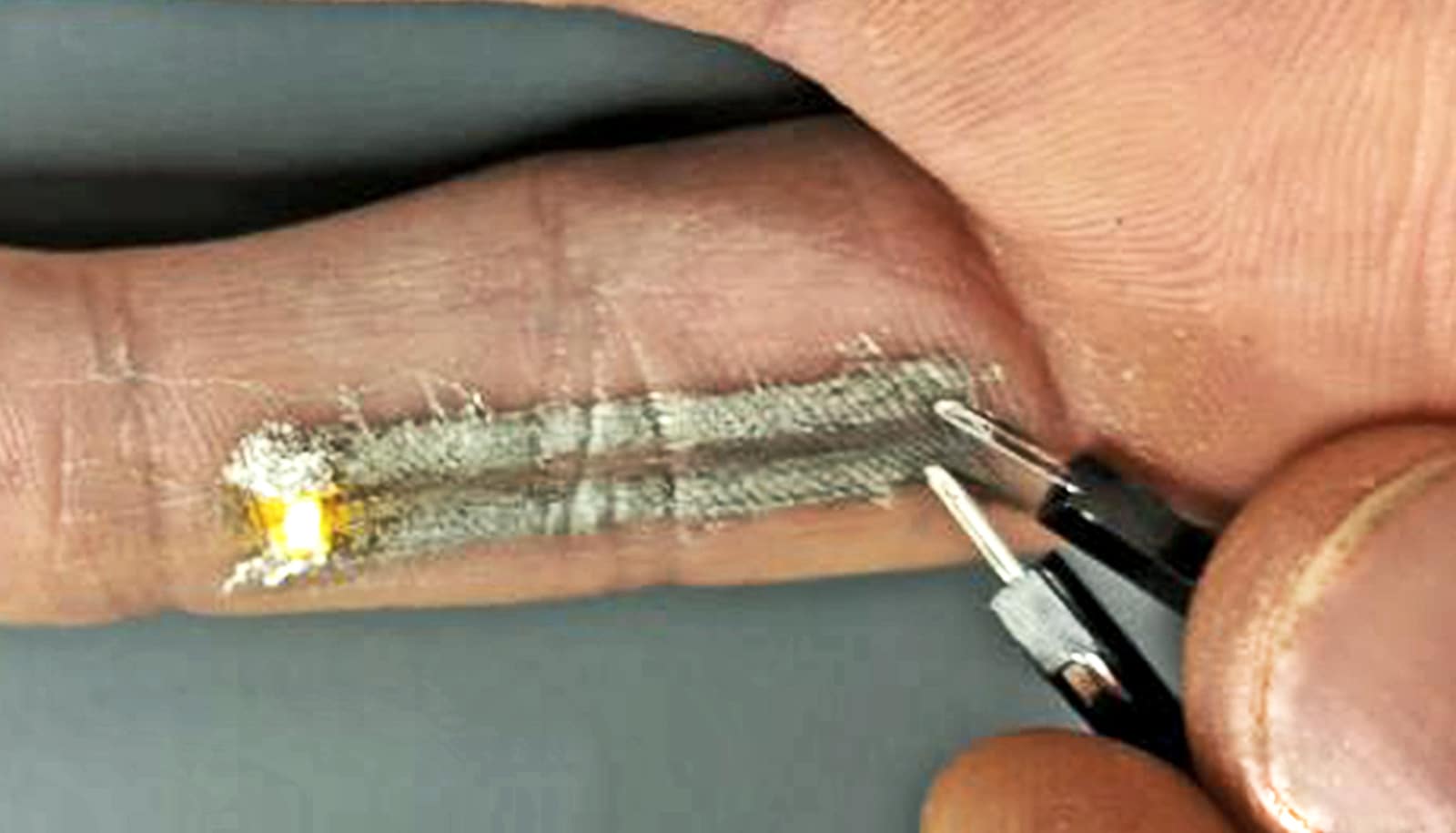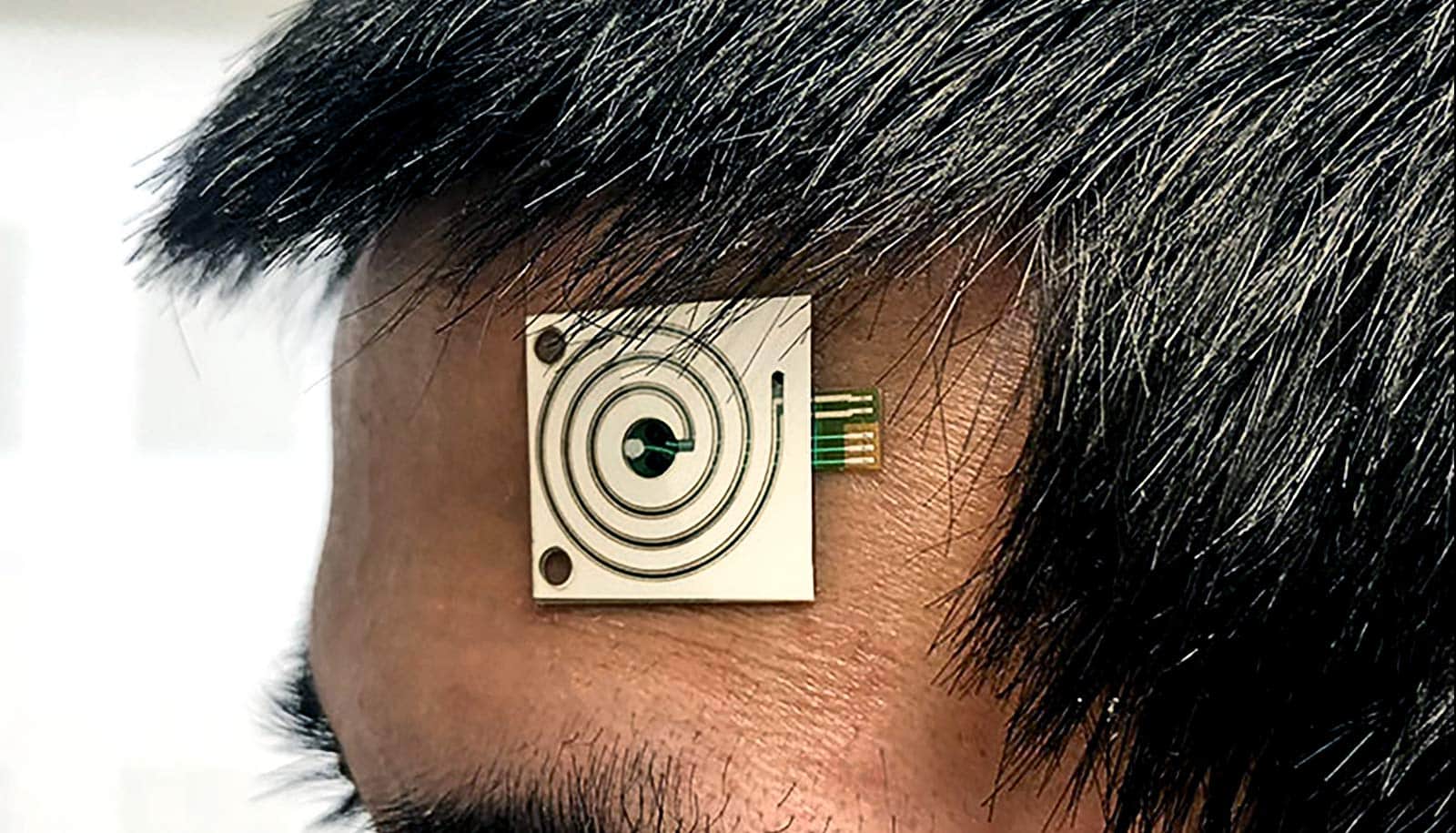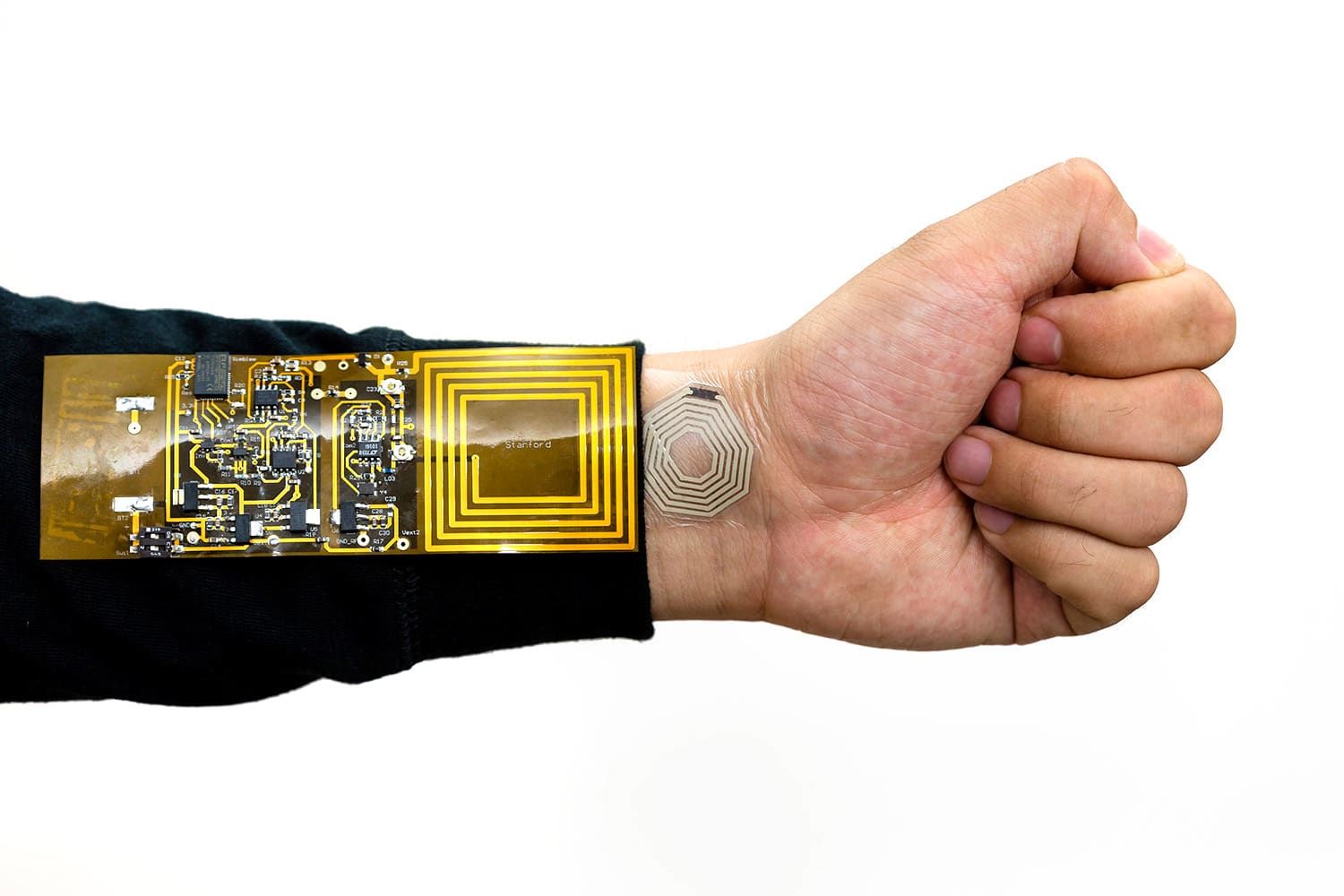A new sensor patch could bring the assessment of human joints into the 21st century, researchers report.
The patch uses electronic sensors to understand the functional range of motion as opposed to today’s static measurements. Kirigami, the Japanese art of creating 3D structures from cut paper, and the recovery of one of the creators after a cycling crash inspired the design of the sensor, which can hug the curves of a joint, yet be manufactured flat.
“The shoulder in particular moves in a very complex way. It’s one of the most well-articulated joints in the body,” says Max Shtein, a professor of materials science and engineering at the University of Michigan, who crashed his bike and collaborated with his students on the work.
“Nobody’s really been able to track it properly with anything wearable, and yet it’s key to so many activities in sports and daily life.”
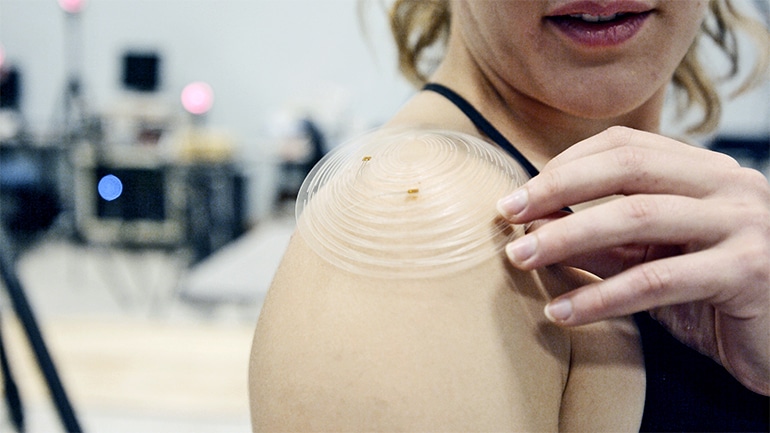
A sensor patch for joint monitoring
After breaking his collarbone, Shtein’s physical therapist assessed the range of motion in his shoulder with a basic protractor. The method is prone to large errors, and he had no way of repeating the measurements at home.
He realized that a wearable sensor could have recorded the full scope of his motion and tracked his exercises, but it’s expensive to build electronics onto curved structures. The sensor would need to be manufactured flat but still follow the contour of a patient’s shoulder.
He and Erin Evke, a doctoral student in materials science and engineering, came up with a solution inspired by kirigami. Evke laser cut a thin sheet of plastic into a labyrinth of concentric ovals. The shape pulls apart almost like a Slinky, and the cuts open into a lacework over the shoulder.
“If you take a sheet of paper and try to wrap it around a sphere, it’s impossible to do so without folding or wrinkling the paper. This would significantly stress the sensors before your measurement even began,” Evke says. “Our cut pattern avoids this problem.”
Because these structures transform from a flat sheet to a wrinkle-free, 3D shape, they can be manufactured with existing, cost-effective technologies. Shtein estimates that the cost of individual sensors could be below $10, assuming mass production. That’s much less than the cost of a single physical therapy appointment. It could be an inexpensive way to improve patient outcomes.
Testing the patch
As a proof-of-concept, the team equipped the kirigami patch with two strain gauges—one along the corner of the shoulder to capture the raising and lowering of the arm, and the other at the back of the shoulder to measure cross-body movements.
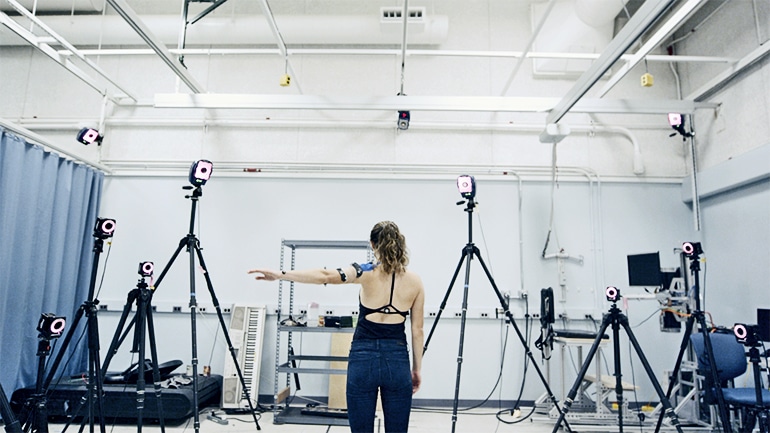
Collaborating with researchers working under Deanna Gates, an associate professor of movement science, Shtein’s team cross-referenced the data from the kirigami sensor with arm motions camera motion tracking system captured. The system uses reflective markers to track the angular positions of the arm and reconstructs them in a computer simulation.
The team envisions that physical therapists could give this kind of inexpensive sensor to patients, enabling them to log exercises and see progress through a smartphone app. This could help keep patients honest about doing their exercises and also provide more detailed information to therapists about each patient’s progress.
Evke, who competed in college track and field, also considers how it could help athletes improve their form.
“Since you can tune the cut design to match the curvatures of all different parts of your body, you can generate a lot of data that can be used to track your form—for instance while lifting—as well as the amount of strain applied on your joints,” she says. “The user could be alerted of improper form in real-time and therefore prevent injuries.”
Shtein points out that we don’t have good ways to measure joints and understand how to care for them. Recent work suggests that tears in the anterior cruciate ligament, a serious knee injury many athletes experience, occur as a result of cumulative stresses rather than a single excessive force. Similar issues occur with the shoulder joint. Inexpensive sensors could measure stresses so that athletes and trainers could recognize evolving problems and head off major injuries.
The study appears in the journal Advanced Materials Technologies. Funding for the study came, in part, from the National Science Foundation.
Source: University of Michigan
